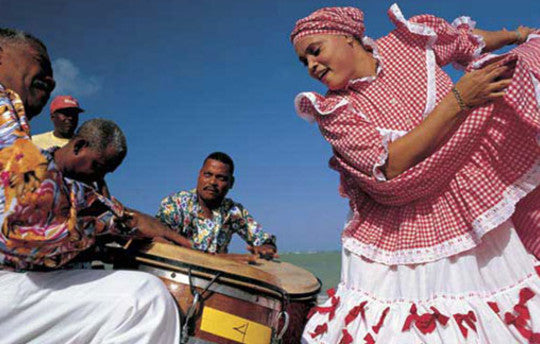Your Cart is Empty

If Cuba is the key creative source of Latin Caribbean music, Puerto Rico is its equal as a supplier of performers and it was the great Puerto Rican immigrant community in New York (the Nuyoricans) that was largely responsible for turning Cuban son into salsa.
Like Cuba, Puerto Rico possesses its own versions of various Afro-Hispanic musics. The oldest established is danza – an equivalent of the Cuban danzon, adapted at aristocratic dances in the nineteenth century from European waltzes and mazurkas.
Also Hispanic in origin is the seis, a song form based, as with much Cuban music, on the décima (ten-line) tradition of rhyming improvised verse. The plena, by contrast, is more of a Caribbean form – a colloquial, narrative song, reminiscent of calypso, accompanying a couple dance.
Although danzas are still quite common – “La Borinqueña”, the island's anthem, is one – it is the plena that is the core local element of Puerto Puerto Rican popular music. The most famous performers of this era were the bands of Rafael Hernandez, whose Trio Borinquen made its name in New York’s growing Puerto Rican community, and the great ‘Canario’ (Manuel Jiménez).
Puerto Rico has another core musical form called bomba – a distinctly African, heavily percussion-based music similar to Cuban rumba. The music accompanies a couple dance in which the man moves separately from the woman, interacting with the improvisation of the requinto drummer. Bomba’s chief exponents are the Cepeda family, led for years by their patriarch Rafael Cepeda. The group Paracumbé also play superb bomba, in a southern style in which women handle the call-and response vocals.
In the 1940s and 1950s urban Puerto Rican bands entered the New York pan-Latin melting pot which, dominated by Cuban bandleaders, gave rise to big-band Latin jazz, rumba, mambo and chachachá. Early Puerto Rican stars in this scene were the Morales brothers, especially bandleader and composer Noro Morales, and the great mambo interpreter Tito Rodríguez.
During the 1970s and 1980s El Gran Combo were the island’s top band and they are still going strong, a national institution alongside their long-term swing rivals, La Sonora Ponceña, from the southern town of Ponce.
Puerto Rican artistes were prominent in the New York-based creation of salsa in the 1970s, and the island itself was a crucial stop on the salsa trail, featuring on tours by all the major artists and proving an important market for record sales.
Among key Puerto Ricans in the development of salsa were Sonoro Ponceña’s Papo Lucca, and Bobby Valentin, a bass player and trumpeter in New York during the 1960s. In the 1970s Valentin recorded a string of salsa hits, including the 1973 classic “Soy Boricua” (I Am A Puerto Rican). However, the most famous Puerto Rican salsa star of all, during the 1970s and 1980s, was the charismatic and brilliant singer Hector Lavoe.
During the 1980s, Puerto Rican artistes were central to salsa developments, with the creation of the new salsa-romantica style. The singer Lalo Rodríguez, interpreted perhaps the biggest pan-Latin hit of the 1980s, “Ven, devórame otra vez” (Come and Devour Me Again). By the 1990s, however, the top star was Eddie Santiago with his lyrically explicit style (“Insaciable”).
Puerto Rico has long maintained a thriving pop scene, with local artists adopting and adapting international trends. This trend began in the 1960s, when Lucecita dominated the charts with her Latin covers of Dusty Springfield songs. Puerto Rico’s international pop star of the same period was the singer and guitarist José Feliciano, who had a massive hit crooning The Doors’ “Light My Fire”. Both Feliciano and Lucecita have their modern equivalents, Ricky Martin and Chayanne, being at the peak of their success.
In the 1980s Puerto Rico and Dominican Republic swamped the US Latin market and for the past few years many of the top pan- Latin merengue acts – Olga Tañon, and the superstar Elvis Crespo – were Puerto Rican.
Puerto Rico was also a prime centre when Latin rap was born in the 1980s. Its most talented exponent is the San Juan born Vico C, author of a string of hits such as “Dulce, Sexy, Sensual”.